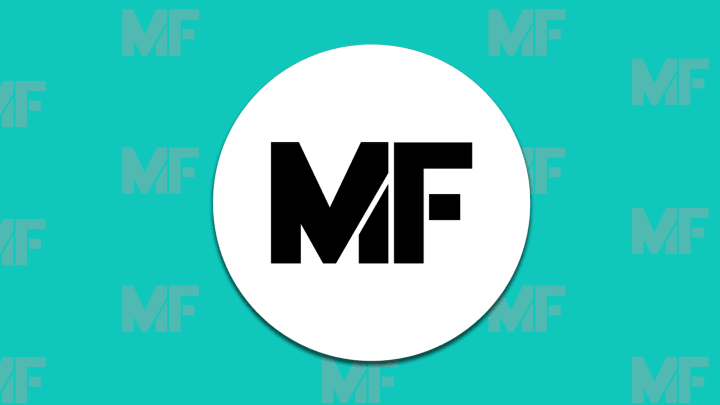Image from the Patent and Trademark Museum. Roger Richards/The Washington Times/Landov
From his humble beginnings as a steamboat stowaway to his current gig as the Magic Kingdom’s most famous resident, Mickey Mouse has worked a lot of jobs. He even moonlights as the poster rodent for copyright protection.
In 1998, Mickey scampered to Capitol Hill when a bill proposing a 20-year extension of U.S. copyright limits was brought before the Senate. Under the planned revisions, corporations (for example: the Walt Disney Company) would retain exclusive rights to original characters and content for a period of 95 years. The previous limit, set in 1973, guaranteed rights for just 75 years. (The changes would also affect works created by individuals, protecting them for an additional 70 years following the death of their author, up from 50 years in 1973.)
Make Your Case
Opponents of the bill argued that such extensions would make it arbitrarily more difficult to legitimately procure older items that, according to previous laws, should long since have passed into the public domain. The new terms, it was said, threatened to tamper not only free speech, but cultural and scientific advancement as well.
Proponents argued that the extensions bolstered free thinking by encouraging people to create new works, rather than appropriate the works of others.
In any event, two more decades of exclusive rights meant potential billions to the Disney corporation, and Mickey wasn’t afraid to break out his claws to guarantee they got them. In fact, the company’s lobbying efforts were so extensive, the bill is often referred to as the “Mickey Mouse Protection Act.”
Thanks in large part to Disney’s efforts, the Sonny Bono Copyright Term Extension Act (named to posthumously honor Cher’s former babe, the U.S. Congressman from California) was eventually signed into law.
Why the Big Push in 1998?
The mousetrap was about to snap shut on the Walt Disney Company.
Under the previous copyright timeline, Mickey Mouse (or, anyway, his earliest incarnation: a gloveless boating enthusiast from the 1928 cartoon Steamboat Willie) was set to enter the public domain in 2003. This meant that one of pop culture’s most visible icons — according to the company, 98% of the world’s children between the ages of 3 and 11 display some awareness of Mickey — was about to become freely available for anyone to use.
Interestingly, 1998 wasn’t the first time Steamboat Willie came close to becoming Free Willie, only to have copyright laws extended at the last moment; it’s happened on at least four occasions. The past two instances of copyright term extensions, in particular, have occurred just as Willie was about to sail into the public domain.
The irony of the situation is that the original Steamboat Willie cartoon was itself a direct parody of a 1928 live-action silent film titled Steamboat Bill, Jr., now freely available in the public domain.
In other words: Steamboat Bill is up for grabs, but the cartoon he inspired is off the table.
Providing a bizarre footnote to the copyright issue is a theory put forth by some scholars that suggests the earliest incarnations of Mickey's copyright laws are technically void, meaning that the original Mickey from Steamboat Willie could, in fact, already be part of the public domain. The notion, which Disney disputes, stems from an ambiguity in the opening credits of the 1928 Steamboat Willie film. While legal precedents suggest the claims of invalid copyright might, in fact, be legitimate, the only way to test the theory would be for someone to dare take on Disney's billion dollar legal shotgun – the financial equivalent of playing Russian roulette.
Disney and the Daycare Centers
Although the Walt Disney name is synonymous with wholesome family entertainment, Disney didn’t become the world’s largest media conglomerate by playing nice. In fact, the company has a history of mercilessly pursuing (and suing) anyone who uses their intellectual property without permission.
A famous example of Disney’s cutthroat approach to brand control occurred in 1989, when the company threatened to sue the owners of three Florida daycare centers who had decorated their buildings’ walls with unauthorized images of several trademarked Disney characters. The issue never made it to court, as the owners of the centers voluntarily painted new murals, featuring Hanna-Barbera cartoon characters, over the Disney designs. (Universal Studios swooped in to volunteer the use of Scooby-Doo and Fred Flintstone’s likenesses after news of the Disney debacle spread.)
Of course, even without the copyright extensions, it would still be next to impossible for anyone outside of Disney to use Mickey without permission, since he, like all Disney creations, is trademarked. Unlike copyrights, which do have dates of expiration, company trademarks are valid for as long as the company uses those trademarked items commercially. As long as Disney keeps Mickey on their employment roster, no one else can touch him.
